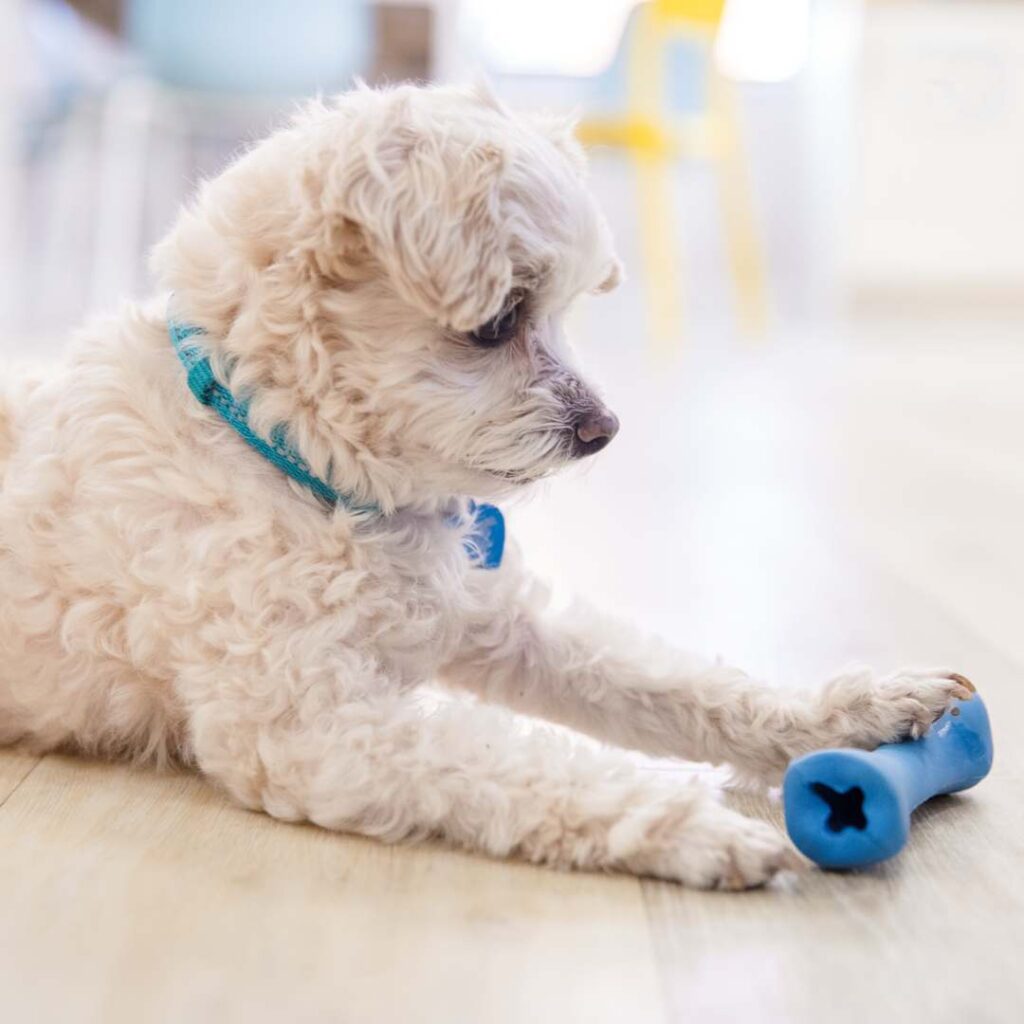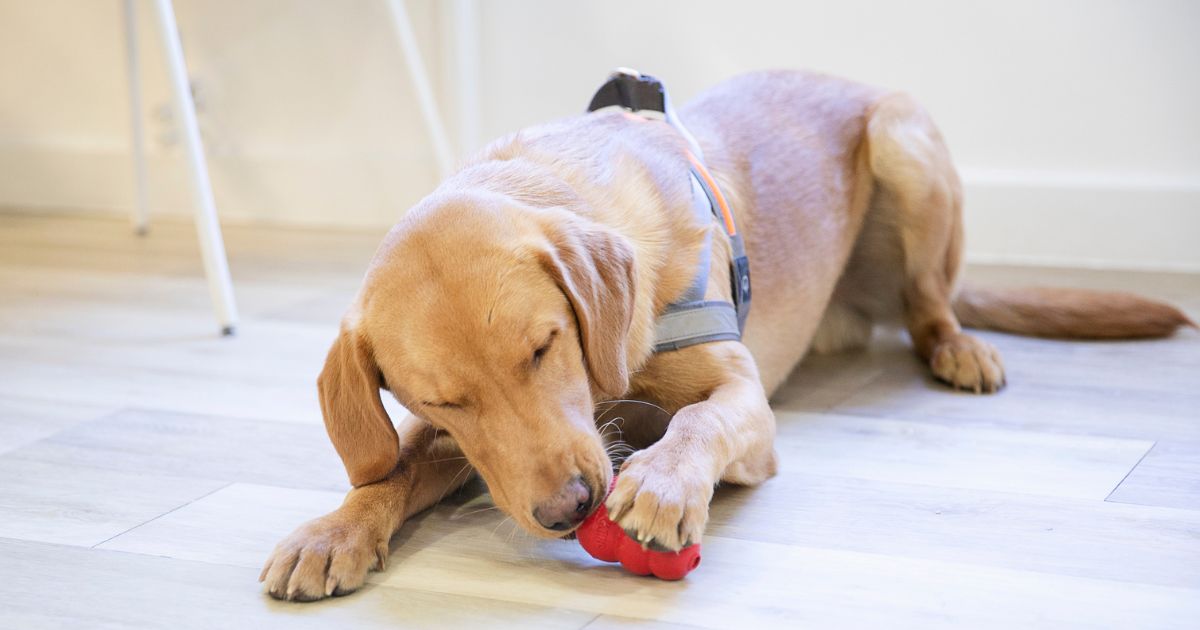Your favourite pair of shoes, the skirting board, even clothes. Discovering your dog has chewed and destroyed something that’s not meant for them can be a nightmare for us. But, if you’re wondering why your dog destroys things, the answer is simple: because they’re a dog!
Do all dogs chew and destroy things?
That might sound a bit frustrating or confusing, but let me explain…
Chewing is a perfectly normal dog behaviour. And if your dog is a breed or cross breed whose job originally involved their mouth – retrieving, hunting, vermin chasing etc – then that desire to have things in their mouths makes chewing things even more natural and rewarding for them.
Dogs need to chew. Some also need to rip and tear and destroy -if you’ve got a toy shredder, you’ll know exactly what I mean here! It’s a natural behaviour, part of their predatory motor pattern and eating behaviour. Plus, it’s internally reinforcing and can calm them in times of stress – and it’s fun for them too!
Let’s face it, life for a dog can often be pretty boring. Even if they get two 90 mins walks a day, that leaves 21 hours left with little to do. You can fill some of that time with training, play, and social contact but there’s still a lot of ‘what can I do now?’ time. And for a dog with limited options (no Netflix or social media), ‘chew stuff’ can be a good answer.
Chewing for many is a great boredom buster.
How can I stop my dog chewing and destroying my things?
The problem of course is there are lots of things (most things in fact) around the house we don’t want our dogs to chew. This increases at certain times of as well – with Christmas bringing the tree, decorations and presents, Easter treats which aren’t dog-friendly, and summer holidays lots of extra shoes and sports equipment. All of these are exciting for your dog to investigate, sniff and have a gnaw on, which can bring our dogs and us into even more conflict.
Like all behaviour problems, rather than thinking ‘how can I stop my dog from…?’, instead we should focus on understanding why it happens. From there, we can think about something positive you’d like them to do instead.

Your chewing checklist
- Recognise chewing is a natural behaviour. Your dog needs an outlet for this, so understanding chewing isn’t ‘bad’ or a behaviour problem, unless they’re doing it in response to being left, is key.
- Give your dog safe and appropriate things to chew. This stops them destroying things they shouldn’t, and gives them something far more rewarding to chew on. Fillable toys or those you can spread food on are great! For rippers and tearers, often Terriers, you could fold treats into cardboard kitchen tubes or thin cardboard boxes and let them tear them apart to get the treats out. Be inventive – as long as it’s safe.
- Tidy up! Dogs don’t know what’s theirs, and what’s yours. A shoe or child’s toy within reach is a temptation… Pick up anything you don’t want them to chew, and ideally put behind a closed door or high up.
- Address boredom. Make sure your dog is getting enough exercise – several sessions a day breaks up the day better. And make sure the exercise is fun and enjoyable for them, play games you know your dog enjoys, do some training – really interact with them.
- Teach your dog to settle. This means when you’re working or busy, they’ll be happy to hang out beside you.
- Play with your dog or provide enrichment. Take a break from whatever you’re doing every two hours to have a game with your dog. Or provide an enrichment toy – LickiMat recipe, puzzle toy – there’s plenty to choose from!
- Create dog zones in your house. Use door gates, puppy pens or even a long line to prevent them wandering off and finding things they shouldn’t. Doubly so if they’re teething or trying to get to grips with their new adult teeth! If you have to leave them, make sure they’re in an area where there’s nothing to chew, apart from their own things.
And remember
Chewing is something all dogs have to do, and some find ripping, shredding and destroying things really rewarding too.
The secret is to make sure they have plenty of things they’re allowed to chew, that they enjoy having a gnaw of, and working on some boredom busting activities, at home and when out on walks, so your dog is happy and content and doesn’t have to go self-employed to find their own amusement.
Check out more some of our favourite enrichment tips and ideas, and our customers’ favourite LickiMat recipes.

